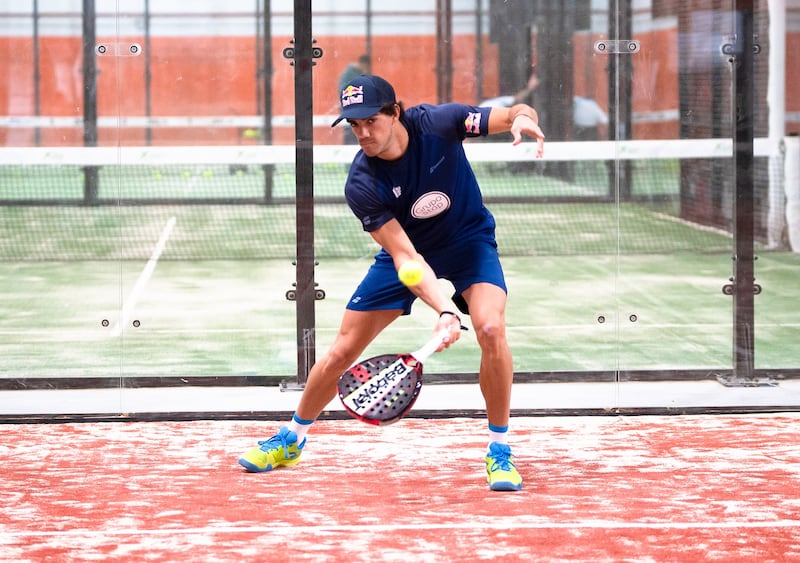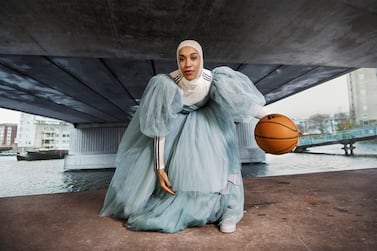“I remember a time back in 2008 when someone first told me there was a game that was a cross between tennis and squash, and I didn’t believe them,” says UAE TV presenter and MC Katie Overy. Today, she plays the game every week.
It’s a story that echoes countless times when it comes to padel tennis, a racquet sport that was little known a decade ago, and has now become a leading game in the UAE.
In line with its popularity, there seems to be a new venue dedicated to the game opening up every day. Eisa Al Marzooqi, a board member on the UAE Padel Association, says there are roughly 350 private and public courts in the country. And only last year, the Dubai Fitness Challenge launched the inaugural Dubai Padel Cup, a month-long event, as its headline act.
What exactly is padel?
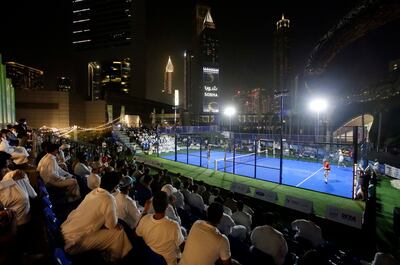
As it’s often described, padel is a cross between tennis and squash (although avid players will tell you it’s unlike either). Typically played in doubles, it takes place on an enclosed court roughly three-quarters the size of a tennis court.
Scoring is the same as in tennis and the balls are similar, but with less pressure. The bats, however, are solid, unlike tennis racquets. The main difference between padel and tennis lies in the court. Padel courts have walls that the ball can be played off, much like in squash.
Also unlike tennis, padel is a much newer sport, with origins believed to be traced back to the 1960s. It’s also believed to be one of the fastest-growing sports in the world.
Why has it become so popular?
There are a lot of reasons for its exponential rise — starting with the fact it can be played by almost everyone.
“The thing about padel is that you don’t need to get to a certain level to have fun,” says Audrey Descols of Matcha Club, a boutique padel venue that opened in Dubai’s Al Quoz last year.
She says they have clients who are very young, as well as those over the age 60, trying out the game. A lot of their customers are beginners who want to learn more about the sport, or yoga enthusiasts who catch a yoga session in the studio, see the game taking place in the courts outside and want to try it out.
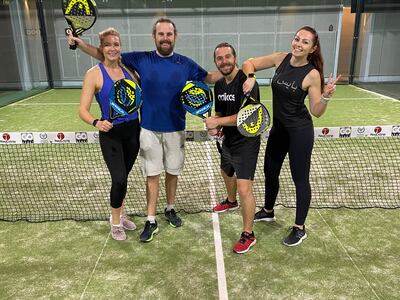
Overy echoes a similar sentiment. “It’s a sport that’s very easy to play but hard to master. Tennis can get technical, but with padel you have that racquet and you just have to hit the ball. But hitting the ball in a certain way — calculating the rebounds — is another thing.”
“I like it because it’s very sociable. There are people who were acquaintances that I’ve gotten closer to as we play together. I’ve definitely seen more people picking up the sport lately.”
The sociability factor of the sport is one that makes it a popular choice to play. Since padel tennis requires four people, many are often introduced to the sport by friends who need a third or fourth member. Some UAE venues — such as Just Padel — also match players according to skill level, if needed.
Saeed Mohamed Al Marri, secretary general of the UAE Padel Association, says that “the first challenge is to get someone to try the game for the first time. After that, it becomes a lifestyle. As you play, the game gets easier. It’s a social gathering for friends.”
He also credits the popularity of the game in the UAE to the tremendous support it’s received from the country's leaders. “The game was introduced by Sheikh Hamdan in 2013. The UAE Padel Association was formed soon after in 2014. Today, we have the support of leadership from all emirates.”
In June 2019, the sport was officially recognised by the General Authority of Sports.
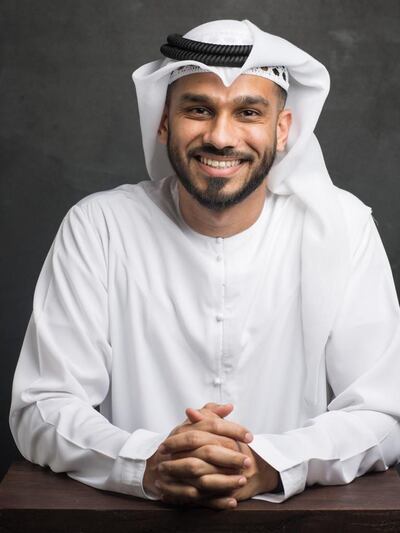
Al Marzooqi says that he has seen interest from people from all over the world — irrespective of playing ability or gender. And, because the courts are smaller than average tennis courts, it makes it easier for venues to accommodate them. “We’re seeing a lot of hotels launch padel tennis courts.”
“To be honest, a lot of people here take to indoor sports to go with our climate. And since things have opened up after Covid, people tend to try something new.”
Who is padel good for?
How intense the game gets depends on how you choose to play. “You do move around a lot, but don’t necessarily break a sweat or need to be an athlete to play," says Overy. “But sometimes, when I play with people who rank 10 times better than me, it can get intense.”
Cornelia Gloor, a physiotherapist at RAK Hospital, points out that it’s easier to learn because it is less physical.
“The body, especially the legs, have to move a lot but not necessarily as accurate as in tennis," she says. "Meanwhile, the ball used is similar to the ones in tennis but with less pressure. So it’s a good workout for the arms and requires less strength.”
She recommends the sport as a good cardiovascular workout with “lower impact compared to other racquet sports, that helps to improve coordination and mobility.” It is said to burn about 600 to 1,000 calories in an hour.
The bottom line? “Padel improves aerobic capacity which helps prevent health risk factors.”
That being said, there are some things to keep in mind. “Because of the stop-and-go movements, there is pressure to the knees. People suffering from any knee pain or knee problems should be careful and start slowly,” says Gloor.
Like with any other sports, she also recommends a good warm-up and stretching before the game.
Things to keep in mind
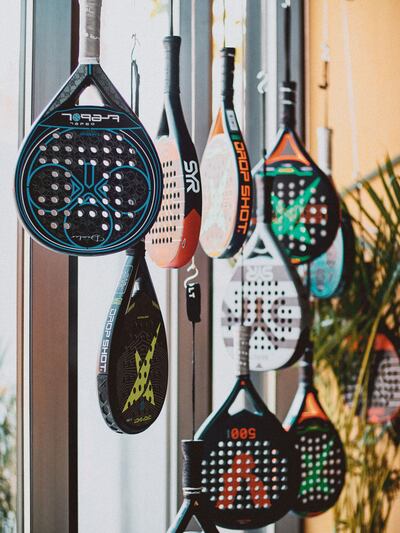
Roberto Rodriguez Alonso, head coach at Central Padel Dubai, which opened in January, says that the most common mistake is not understanding that the game is all about strategy.
“As you start padel, you will improve really fast and reach the intermediate level,” he says. “Once you are there, most players stop improving and get stuck because they don’t have the tactical tools to move up.
"I get lots of new students thinking they’ve hit an invisible ceiling; this is generally right before I introduce tactics and strategy to them — then they really discover what padel is about.”
Much like other partner games — such as badminton — padel focuses on the strength of teamwork.
Finally, Alonso advises players to “play with your opponent — not against”.
“Most beginners try to hit the ball where the opponent is not and take too much risk to win the point. My idea is to play aiming for your opponent; this way, you take less risk and develop consistency. Consistency is the most important when you start padel, always keeping the ball in.”
What’s next for padel in the UAE?
With local and international interest ramping up, expect plenty of tournaments in the coming year.
“We are pushing boundaries to see how people can explore this sport. A lot of people are learning about it from friends and family,” says Al Marzooqi.
There’s also a push to get more women involved in the sport, too.
“There are programmes to coach women; and lots of clubs now also have women-only timings," he says.
“Obviously in this region, a majority of the people love football. But padel is on the rise. It’s evolving globally and we’re on the road map of being an international presence.”
